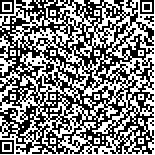|
|
|
| |
|
|
| 本文已被:浏览 2055次 下载 1231次 |

码上扫一扫! |
|
|
| 密度胁迫对卵形鲳鲹鱼苗运输水质、存活率、免疫酶活力和血清指标的影响 |
|
刘思迅1,2,3, 周胜杰1,2, 韩明洋1,2, 王一福1,2, 洪嘉炜1,2,3, 顾志峰3, 马振华1,2
|
|
1.中国水产科学研究院南海水产研究所 热带水产研究开发中心, 海南 三亚 572018;2.农业部南海渔业资源开发利用重点实验室, 广东 广州 510300;3.海南大学 海洋学院, 海南 海口 570228
|
|
| 摘要: |
| 为了研究密度胁迫对卵形鲳鲹(Trachinotus ovatus)鱼苗运输水质、存活率、免疫酶活力和血清生化指标的影响,确定适宜的运输密度,为卵形鲳鲹鱼苗的科学运输提供参考依据。对卵形鲳鲹鱼苗(体长为5.36 cm±0.60 cm,质量为3.04 g±0.71g)采用塑料袋密闭充氧运输方式,在3个不同运输密度下(D1=9 kg/m3、D2=12 kg/m3、D3=15 kg/m3)模拟运输8 h,对比运输不同密度卵形鲳鲹鱼苗对运输水质、鱼苗存活率、肝脏免疫酶活力和血液生理生化指标的影响程度。结果表明,3个密度组的卵形鲳鲹鱼苗的存活率均为100%,经运输后暂养72 h的存活率仍为100%。经塑料袋密闭充氧运输8 h后,3个密度组的运输水体的DO含量无显著变化,运输水体温度(T)和pH值随运输密度的增加而降低,NH4-N含量随运输密度的增加而上升,其中NH4-N的含量显著高于对照组。肝脏组织中,D1、D2、D3的总超氧化物歧化酶(T-SOD)活力无显著差异(P>0.05,下同),而高运输密度组(D3)对比对照组,两组的T-SOD活力变化存在显著差异(P<0.05)。密度运输胁迫组乳酸脱氢酶(LDH)活力显著高于对照组水平,D2、D3无显著差异,显著差异于D1组。过氧化物酶(POD)活力D1、D2、D3组无显著差异,但均显著低于对照组。3组实验组的过氧化氢酶(CAT)活力均显著高于对照组且组间无显著差异。血清中,D1、D2组的CRE活力显著低于对照组,但D3组又显著高于对照组。D1、D2、D3的血清中皮质醇(COR)活力无显著差异,但显著高于对照组。D2、D3的葡萄糖(GLU)含量与对照组无显著差异,D1显著低于对照组。D1、D2、D3 3个运输密度组的谷丙转氨酶(GPT)与谷草转氨酶(GOT)活力均显著高于对照组。同时,D1与D2组的GPT活力显著低于于D3组,但GOT活力显著高于D3组。密度胁迫对卵形鲳鲹鱼苗的运输存活率无影响,但对运输其的水质、免疫酶活力及血清生化指标均有影响。在实际运输中,采用塑料袋密闭充氧运输,运输时间时长为8 h以内,运输密度设定为15 kg/m3的卵形鲳鲹鱼苗为宜。 |
| 关键词: 密度胁迫 运输水质 存活率 免疫酶活力 血清指标 卵形鲳鲹(Trachinotus ovatus) |
| DOI:10.11759/hykx20181021001 |
| 分类号:S981.13 |
| 基金项目:国家自然科学基金资助项目(31502186);中国水产科学研究院南海水产研究所中央级公益性科研院所基本科研业务费专项资金资助项目(2014YD01) |
|
| Effects of density stress on water quality, survival rate, immune enzyme activities, and serotonation index of Trachinotus ovatus |
|
LIU Si-xun1,2,3, ZHOU Sheng-jie1,2, HAN Ming-yang1,2, WANG Yi-fu1,2, HONG Jia-wei1,2,3, GU Zhi-feng3, MA Zhen-hua1,2
|
|
1.Research Institute of Tropical Fisheries, South China Sea Fisheries Research Institute, Chinese Academy of Fishery Sciences, Sanya 572018, China;2.Key Laboratory of South China Sea Fishery Resources Development and Utilization, Ministry of Agriculture, Guangzhou 510300, China;3.Ocean College, Hainan University, Haikou 570228, China
|
| Abstract: |
| This study was conducted to determine the effects of density stress on water quality, survival rate, immune enzyme activities, and serotonation index of Trachinotus ovatus and to determine the appropriate transport density to provide a reference for the scientific transportation of T. ovatus. T. ovatus (body length 5.36 ±0.60 cm/tail, weight 3.04 ±0.71 g) were simulated transported for 8 h at three transport densities (D1=9 kg/m3, D2=12 kg/m3, D3=15 kg/m3) using plastic bags in a closed oxygenation transportation mode. Results showed that the survival rate of T. ovatus in the three density groups was 100%; furthermore, after 72 h of transportation, the survival rate was still 100%. After 8 h of closed oxygenation in the plastic bags, there was no significant change in the DO content of the transport waters of the three density groups. The T and pH values decreased with the increase in transport density, and the contents of NH4-N increased with the increase in transport density. And rising, wherein the content of NH4-N was significantly higher than that of the control group. No significant difference was observed in T-SOD activities among D1, D2, and D3 groups in the liver tissue (P > 0.05, the same below), whereas in the high-density transport group (D3), there was a significant difference in T-SOD activities between the two groups compared with the control group (P<0.05). The LDH activities were significantly higher in the density transport stress groups than in the control group, but there was no significant difference between D2 and D3 groups, whose LDH activities were significantly different from those of the D1 group. The POD activities showed no significant difference among D1, D2, and D3 groups, but they were significantly lower than those of the control group. Regarding the CAT activities, all the three experimental groups showed significantly higher activities than those of the control group, and there was no significant difference between the experimental groups. In the serum, the CRE activities of D1 and D2 groups were significantly lower than those of the control group, whereas the D3 group showed significantly higher activities than those of the control group. The COR activities showed no significant difference among D1, D2, and D3 groups, but they were significantly higher than those of the control group. The GLU content of D2 and D3 groups was not significantly different from that of the control group, and the D1 group exhibited a significantly lower GLU content than that of the control group. The GPT and GOT activities of the three transport density groups D1, D2, and D3 were significantly higher than those of the control group. At the same time, the GPT activities of D1 and D2 groups were significantly lower than those of the D3 group, whereas the GOT activities were significantly higher than those of the D3 group. Density stress had no effect on the transport survival rate of T. ovatus; however, it had an impact on the water quality, immune enzyme activities, and seroconversion index. In actual transportation, the plastic bag is sealed and oxygenated, and the transportation time is less than 8 h. Therefore, a density of 15 kg/m3 of T. ovatus is suitable. |
| Key words: density stress water quality survival rate immune enzyme serotonation index Trachinotus ovatus |
|
|
|
|
|
|
